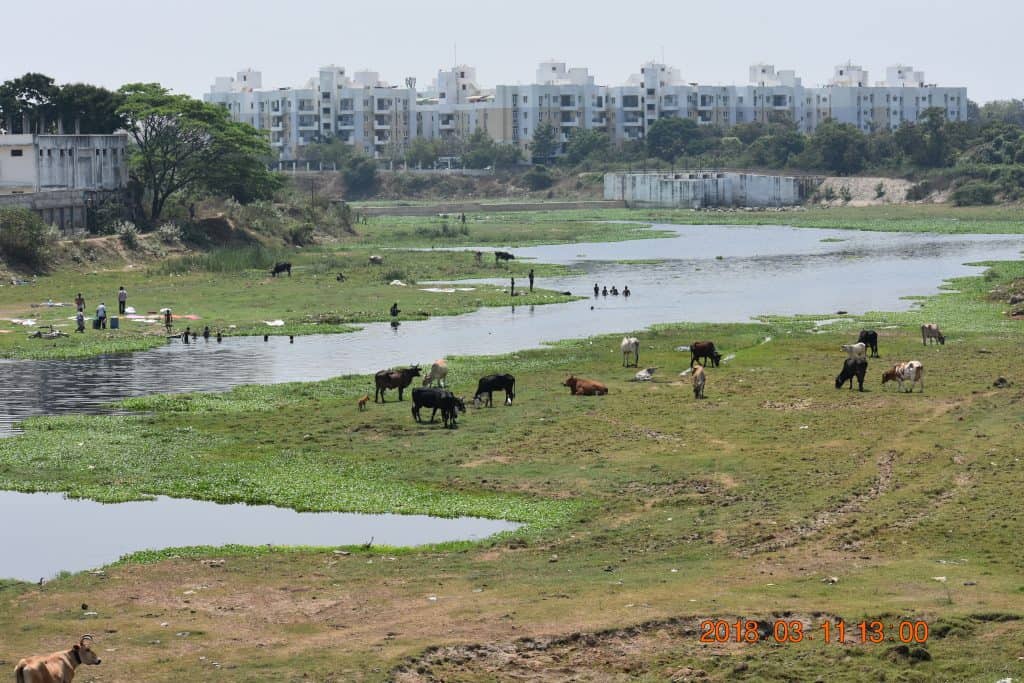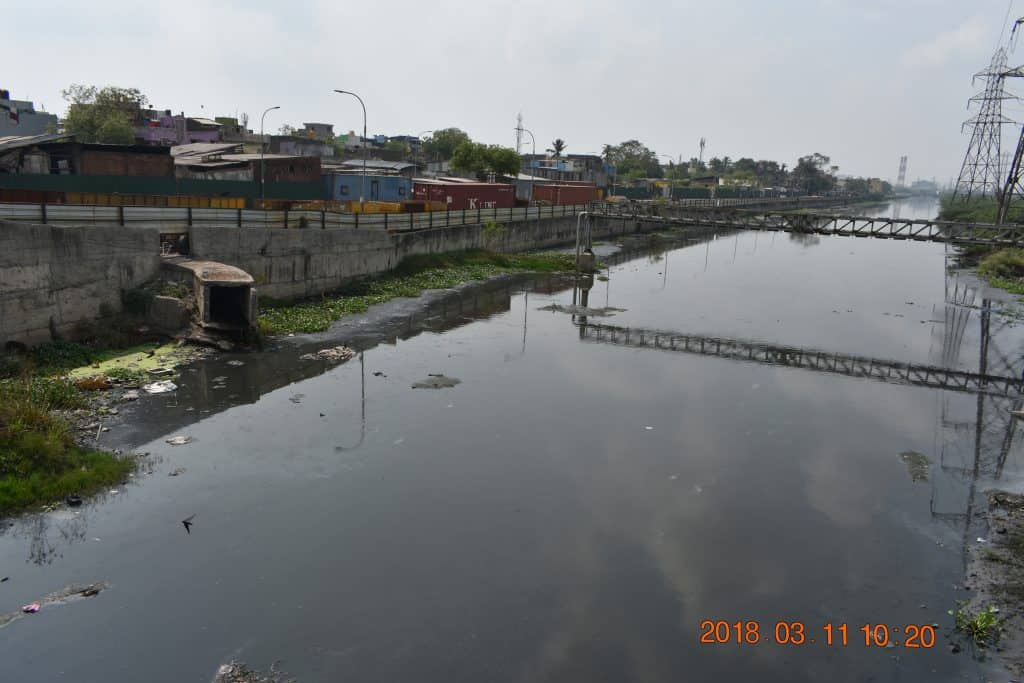Once there was a river. Rather, there were many rivers. And then there were none.
In the run up to Arappor Iyakkam’s Sakkadai Thiruvizha, a citizen awareness program to highlight the problem of sewage being let into Chennai’s water bodies, two young photographers — Raghavan Lokesh and Mohan Kumar Karunakaran — volunteered to travel along Chennai’s rivers, and capture images for our readers.
The pictures are heart breaking. Let us take a minute to view, and mull over, what we have done to the lifelines of this city.

Birds fly over the Kosasthalaiyar in valiant bid to find something alive in the waters. Pic: Raghavan Lokesh

Cattle grazing on the bed of what is left of the Adyar river, behind MIOT Hospital. Pic: Raghavan Lokesh
[Raghavan Lokesh is an entrepreneur and has been volunteering with Arappor Iyakkam since 2017. Mohan Kumar Karunakaran works with Royal Bank of Scotland. Moved by the state of a water body in his neighbourhood, he has been volunteering with Arappor Iyakkam over the last few months, seeking to impact the city in a positive way.]










